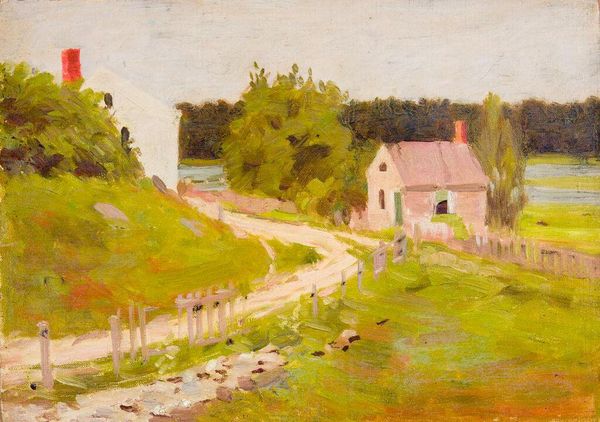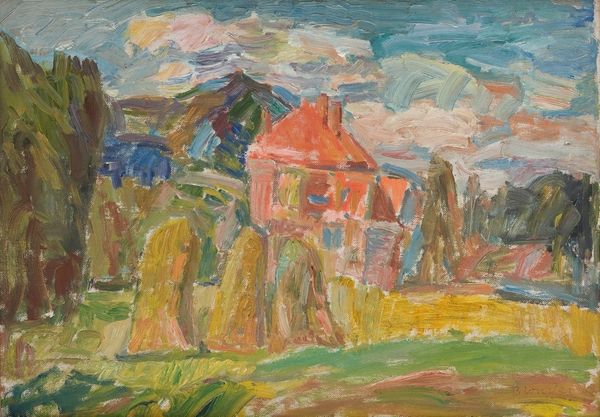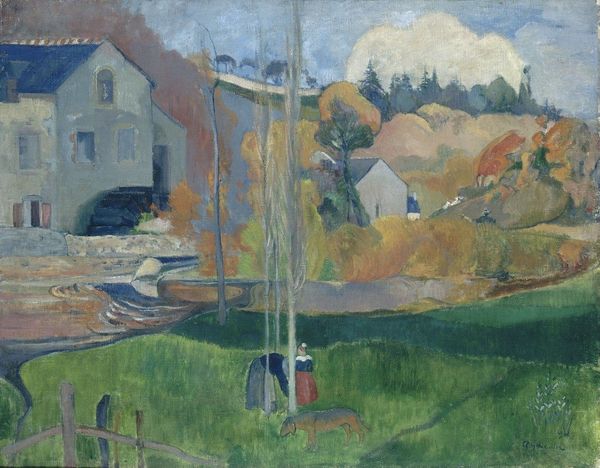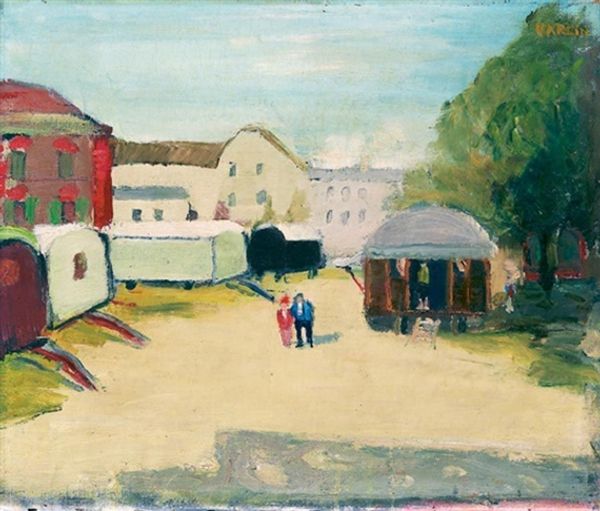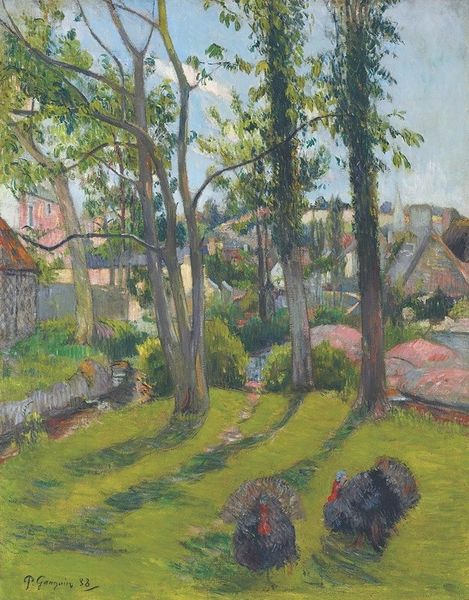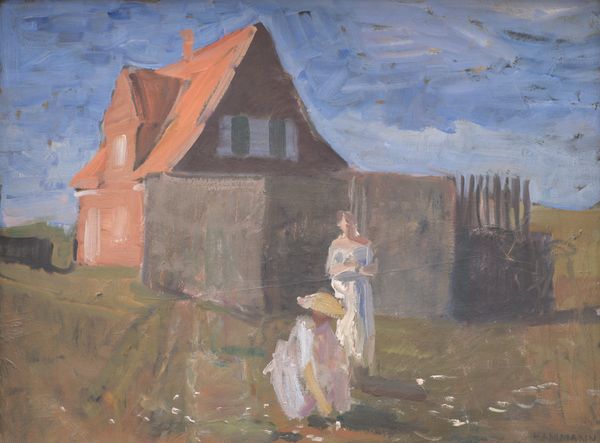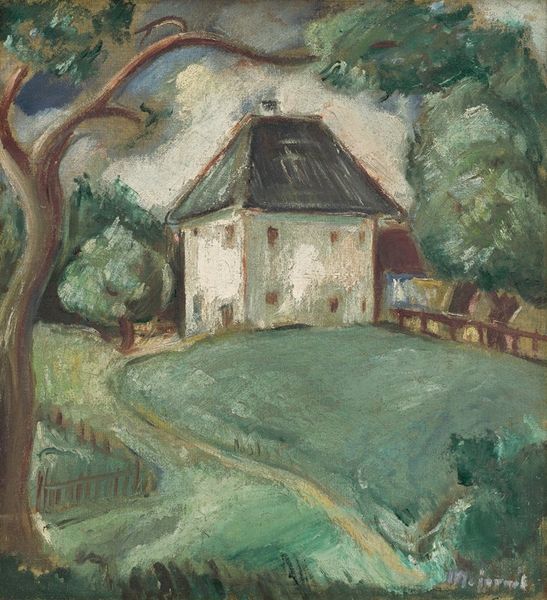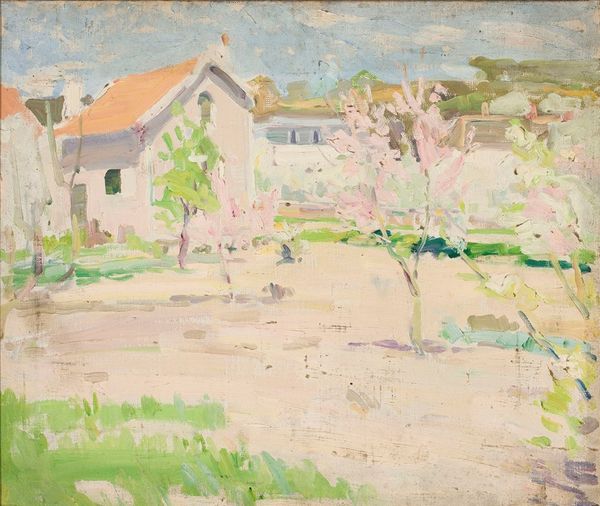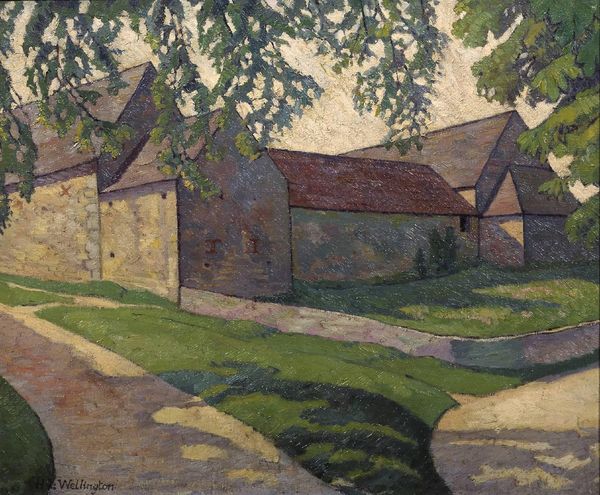
painting, oil-paint
#
painting
#
oil-paint
#
landscape
#
figuration
#
oil painting
#
painterly
#
realism
Copyright: Public Domain: Artvee
Curator: Tadeusz Makowski's 1926 oil painting, "Road in front of the farm," offers a compelling glimpse into rural life. What strikes you immediately? Editor: The palette, definitely. It’s muted, earthy, almost nostalgic, as if filtering a memory. It speaks to the cyclical nature of rural life. What’s interesting to me is this immediate, almost naive impression that, socially, something's amiss or could change imminently. Curator: Indeed. Makowski was deeply influenced by social realism, engaging with depictions of working-class communities in Poland and later in France. The composition also subtly reflects the tensions of that era. Notice how the figures of the children almost blend into the road, symbolically anchoring them to the land. They feel deliberately placed within the frame. Editor: They seem resigned, which contributes to that sense of muted melancholy, in a time rife with upheaval. The farm's fence appears to function as an iconic border. It hints at separation or perhaps limited freedom within a societal system that determines social movement. The cows near the house act as figures, too: representing domesticity or abundance? Curator: The fence's blue is a vibrant, unexpected colour amongst those muted tones. That touch may speak to yearning for something else, but it's deliberately blocked. These motifs create an intersectional reading; the painting addresses socio-economic restrictions, childhood, and landscape all at once. Editor: It is almost as if the very color contrasts were a form of subtle defiance, too, set against a historical backdrop. The ladder in the distance – what about it? Perhaps signifying potential mobility or simply labor's presence? Curator: The ladder becomes another of the many ambiguous signifiers, loaded as it is with symbolic weight: aspiration versus practicality, individual effort versus societal structure. It contributes to an overarching impression of a community stuck between tradition and progression, visible from the details. Editor: I agree entirely, especially regarding the societal themes, so visible if you are sensitive to these particular cultural memories embedded into its visual DNA. It leaves us to ponder the subtle ways in which individual lives become part of larger socio-political narratives. Curator: Indeed, art holds immense capacity to echo history, reflect community, and offer personal insights on a timeless theme.
Comments
No comments
Be the first to comment and join the conversation on the ultimate creative platform.
